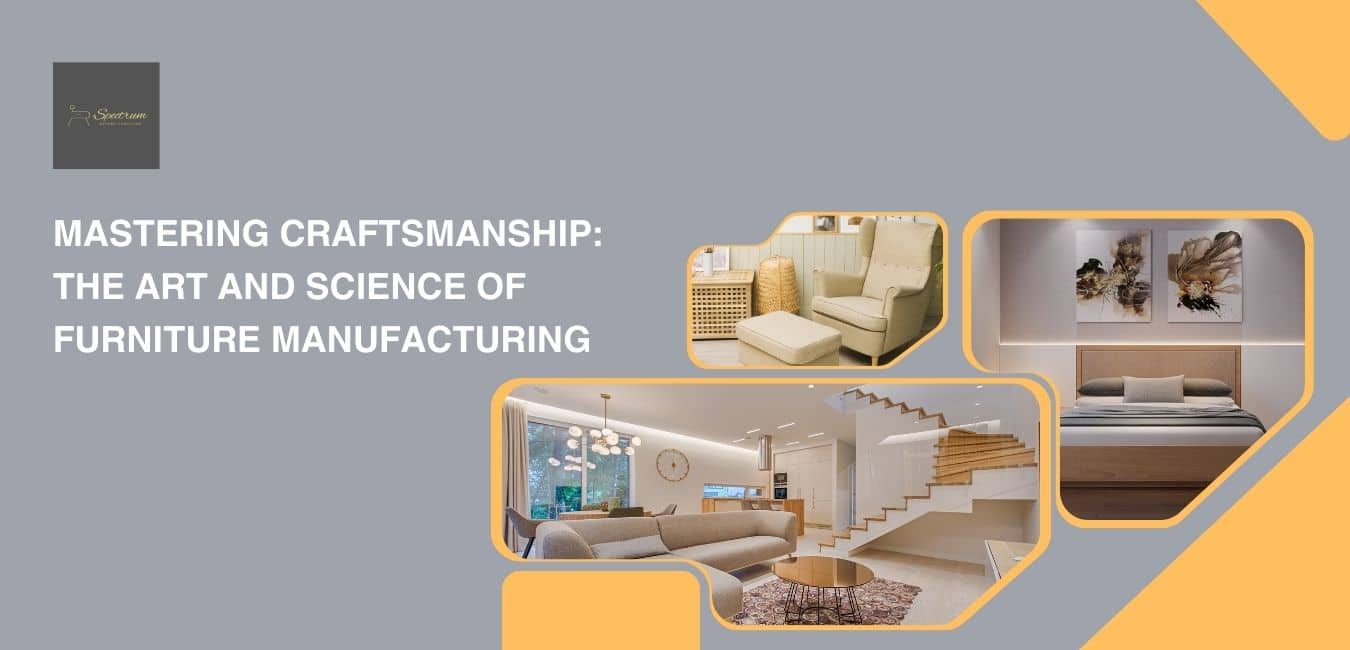What do we need to know about the art of manufacturing and furnishing? A wonderful mix of art and science, furniture manufacturers use sophisticated techniques to turn raw materials into aesthetically beautiful and useful objects. This page examines the methods, materials, and workmanship involved in creating premium furniture and explores the realm of top furniture fabrication.
Furniture Fabrication’s Method of Operation
Furniture manufacturing has various phases, each needing great accuracy and ability. Every stage, from the first concept to the finished product, is vital in guaranteeing the furniture’s longevity, utility, and beauty.
- Selection of Materials:
Furniture manufacture depends on the correct material selection. The material chosen influences the cost, look, and lifetime of the furniture. Common materials include glass, metal, plastic, and wood. Every material has special qualities and calls for different approaches to handling it. For instance, whereas metal is appreciated for its strength and modern appeal, wood is prized for its natural beauty and adaptability.
- Shapes and Cutting:
Once the materials are chosen, they must be molded and cut to fit the design guidelines. This stage entails the perfect fitting of every component, depending on precision, using saws, routers, and CNC (Computer Numerical Control) machines, among other equipment and technology. While modern fabrication usually depends on automated machinery for accuracy and efficiency, traditional workmanship may include hand tools and manual processes at this stage.
- Joining and assembly:
Following cutting and shaping comes the joining of the various parts. One can accomplish this by gluing, welding, or bolting. The furniture’s design and the materials used determine the connecting technique. For example, PVD coating service Bangalore, Karnataka, India might be welded together, whereas wood pieces might be linked by mortise and tenon connections. This stage calls for great skill to guarantee strong joints and a stable and lasting result.
- Final touches:
The final stage is where the custom designed luxury furniture really comes to life. To attain the intended look and feel, this entails sanding, staining, painting, or varnishing the surface. The finishing stage not only improves the furniture’s look but also guards against wear and damage. A well-executed finish can accentuate the inherent beauty of the materials and provide the finished product with some elegance.
Furniture Fabrication Techniques and Skills
Building a luxury sofa set requires a variety of techniques and knowledge. It is an art form. To create excellent furniture, craftspeople have to be masters in several disciplines.
1. Carpenter work:
Furniture construction revolves around carpentry, especially when working with wood. This covers cutting, shaping, and assembling wooden parts. Expert carpenters can develop complex patterns and guarantee flawless fit between every piece.
2. Metalworking:
When furniture features metal PVD coating prices in Bangalore Karnataka, India, metalworking knowledge is rather important. This covers forming, cutting, and welding metal parts. Metalworkers need a strong hand and a sharp eye for detail to guarantee accuracy in their job.
3. Upholding:
Upholstery is cloth, leather, or another material covering furniture. It depends on this ability to create comfortable and visually beautiful seating. UpholsterersUpholsterers must be skilled in measuring, cutting, and stitching textiles to suit the furniture exactly to suit the furniture exactly.
4. Finalizing:
As was already indicated, furniture construction depends critically on finishing. To get the right look, one must have knowledge of sanding, staining, and finishing applications. An excellent finish may make a basic piece of furniture a work of beauty.
Materials for Furniture Fabrication
The final result’s quality and look depend much on the materials chosen. These are a few often used materials in furniture construction:
1. Wood:
Because of its natural beauty, adaptability, and durability, wood is among the most often used materials in furniture building. Various kinds of wood have special qualities and looks; examples are walnut, maple, and oak. Wood may be readily molded, carved, and polished to produce various furniture forms, from rustic to modern.
2. Metal:
Modern custom-designed luxury furniture makes great use of metal because of its strength and elegant look. Steel, aluminum, and iron are commonly utilized metals in metal furniture construction. Metal can be formed into many forms and combined with other materials like glass or wood to make arresting works.
3. Plastic:
Plastic may be molded as a flexible substance with many colors and shapes. Its lightweight and robust qualities are frequently found in modern furniture design. High-quality, fashionable furniture able to resist extreme use and harsh circumstances has been made possible by developments in plastic technologies.
4: Glass:
Furniture frequently made of glass appeals elegantly and modernly. It is sometimes used with metal or wood to provide a stylish and airy look. Glass furniture must be handled and crafted carefully to guarantee durability and safety.
Conclusion
Combining design, workmanship, and technology, furniture manufacture is difficult but worthwhile. Every step, from the first design to the finished good, calls for meticulous attention to detail, skill, and careful planning. New materials, methods, and trends influence furniture manufacture as the sector develops. Whether you’re a craftsman committed to your trade or a customer searching for the ideal piece, knowing the nuances of furniture building can help you to appreciate this classic art form.
Direction: Get Here


